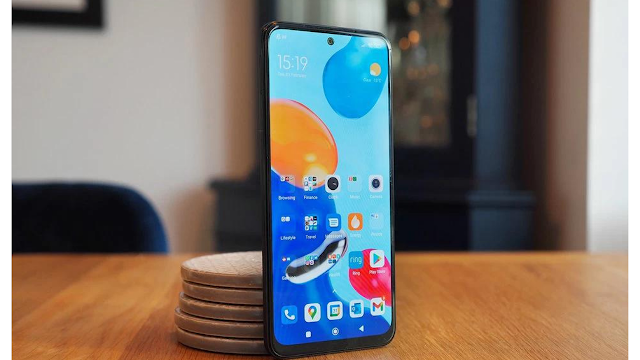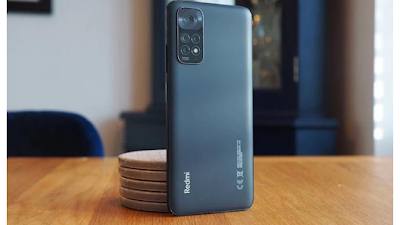Redmi Note 11 Review
Display and Design:
6.43-inch AMOLED board, 90Hz invigorate, 1080 x 2400 goal
Aspects: 159.9 x 73.9 x 8.1mm/Weight: 179g
Wraps up: Graphite Gray, Pearl White, Star Blue
Side-mounted finger impression scanner
IP53 dust and sprinkle security
3.5mm earphone jack
As you can see from the spec outline over, the Redmi Note 11 truly isn't wrecking concerning with regards to highlights. The utilization of AMOLED at this sticker cost isn't consistently guaranteed - guaranteeing punchy tones and rich blacks - while the 90Hz board conveys a respectable invigorate rate at this finish of the market.
Curiously, the first Chinese adaptation of this telephone isn't somewhat something very similar, conveying a marginally bigger scope LCD board all things considered - 6.6-inch rather than 6.43-inch - not that we'll harp on that here, but rather assuming you're burrowing around the web for an assortment of surveys and remarks about the Note 11 then you might detect this unconventional contrast in the territorial deliveries.
In any case, back to our handset, bound for European delivery: sure, the screen's base bezel is chunkier than you'll find on the present top-level handsets, yet that will be normal, placing it pretty much comparable to something like the Moto G31 according to a visual viewpoint. To be sure the goal and board size are basically the same between the two, however, the Redmi offers the quicker revive pace of the pair (selectable as 60Hz or 90Hz choices just, there's no factor invigorate).
Different highlights are good, including fair residue sealing and restricted water opposition (IP53 implies it'll be alright in a little downpour for a couple of moments, everything being equal), in addition to a side-mounted finger impression scanner that we've viewed as viable being used.
In any case, the plan is genuinely clear: the plastic back comes in one of three tones, not in any event, professing to copy a glass look or conveying any sort of eye-getting finished completion, yet it's a flawless and clean methodology by and large. Indeed, even the camera unit doesn't project such long ways as to make the gadget wobble concerning when sitting in a work area, which we like.
Performance and Battery:
Qualcomm Snapdragon 680 stage, 4GB RAM
64/128GB capacity, microSD card extension
5000mAh battery, 33W quick charging
4G just, not 5G
Up to this point, so intrigued, with the Redmi Note 11 appearing to be a truly engaging section-level handset. But, when you get into utilizing it, different issues make it an incredible inverse. Having dealt with this telephone for seven days now as our everyday driver, it's introduced different continuous issues that reach from bothersome to dangerous.
What precisely would we say we are referring to? As a matter of first importance: power outage issues. Frequently while letting an application go inactive, the screen naturally turns off so the telephone can hold battery duration (completely typical), it tends to be a fight to get the Note 11's to reactivate as you'd anticipate (not really ordinary). Prompt various unique mark scanner presses and head-scratching attempting to work out what's happening.
Furthermore, frequently connected with the issue over, this has at times brought about all-out crashes. Some direct past our understanding where a full handset was expected with a long press-and-hold of the power button. Others, joined by the message 'Framework UI isn't reacting' have figured out how to rescue things and return to some usable structure after some time. All things considered, not great.
Thirdly, there's occasionally a sort of yo-yo impact as far as perfection, as though the marriage of processor and programming can't continuously convey a steady result. In certain games, for instance, you could encounter super smooth liveliness followed by minor stammers - a sort of concertina impact, maybe - that simply doesn't look or feel very right.
The explanations behind this appear to be a combination of both equipment and programming. From one viewpoint, the Note 11's utilization of Qualcomm's Snapdragon 680 stage really returns it a stage contrasted with the prior Note 10's utilization of Snapdragon 678 (the last stage utilizes fresher A76 centers, the previous referenced uses more established A73 - which could sound in reverse, yet that is the way it is). On the other, the execution of Xiaomi's MIUI Global 13 programming apparently presents its own issues, as somewhat brought up by the System UI notice called attention to above.
MIUI, as we've noted throughout recent years, can at times give issues notices, because of the manner in which the product handles per-application battery investment funds and auto-on usefulness. You can handle this exclusively - and should to get the best from your go-to applications - however, indecency, in Redmi structure we've seldom experienced any breaking issues. Hate the left/right descending swipe split for warnings/settings uncover, however, which is more similar to utilizing an iPhone than an Android gadget. Gracious, and the 'Backdrop Carousel' (Xiaomi-chose pictures, some of which we don't see as engaging by any means, as a turning pattern of backdrops) is best turned off for the substantially more valuable Always-on Display choice.
Obviously, this is a financial plan handset, so we're not expecting marvels by and large, yet the truth of the matter is that the prior Redmi Note 10 Pro model was such a ton better than this in all cases. Accordingly, we'd forego the standard Redmi Note 11 and anticipate the Pro variation all things being equal (with an inquiry waiting over that handset's utilization of Mediatek's Helio G96).
In any case, on the off chance that you don't press the Redmi Note 11 with an excessive amount to do - keep away from stores of different program tabs, various applications being open, etc - it's more friendly. The battery duration is positively not an issue, for instance, with the 5000mAh cell here raging during a time easily and well into the following, moving toward the two-day marker. The charging speed is fast for a spending plan telephone as well, which adds extra focus.
Cameras
Quad back cameras:
Fundamental (26mm): 50-megapixel, f/1.8 gap, stage identification self-adjust (PDAF)
Wide (118 degree): 8MP, f/2.2
Full scale: 2MP, f/2.4
Profundity: 2MP, f/2.4
Forward-looking selfie camera: 13MP, f/2.4
With regards to cameras, we're not astounded to see four focal points on the back of the Redmi Note 11, as it's the go-to number for most makers who need to oversell their framework as a "quad-camera". Here you can overlook the large scale and profundity sensors, which are a lost cause, and consider it a double camera arrangement all things being equal.
According to that viewpoint, nonetheless, it's none really awful by any means: the primary 50-megapixel camera is a more excellent sensor than you'd anticipate that many should convey at this price tag; and keeping in mind that the wide-point isn't anyplace close to as great quality, it's still truly helpful to have that extra broad perspective of the world readily available. There's likewise a 2x advanced zoom that is adequately proficient to be useful. So this center two-camera unit positively has to the point of yelling about.
The principle camera doesn't deal with high unique reach (HDR) well enough, however, its pictures are fairly grainy, as well, and you can see honing from handling being pushed rather emphatically. In any case, essentially there's some grain in there, providing it with a feeling of reality, instead of adding up to excessively smoothed handling. Curiously, even low-light shooting is completely conceivable because of a nice totally open gap - and that notwithstanding no optical adjustment here.
If you somehow managed to put this camera next to each other against the Moto G31 then, at that point, it's actually very comparable as far as generally offering - albeit the Redmi is slower for the application to stack, we feel. There additionally aren't better quality highlights like optical adjustment (OIS), however, you really do get stage recognition self-adjust (PDAF) for simple tap-to-center, in addition to the application will raise an openness slider on screen for fast and simple changes to make any.









.jpg)


.jpg)

3 Comments
Very nice and a worth article shared, keep writing, thank you.
ReplyDeleteFor unique business ideas related articles please click on below link
https://businessentrepreneur.co.in
why you not add contact form.pm me.
ReplyDeleteLunch in pakistan
ReplyDelete